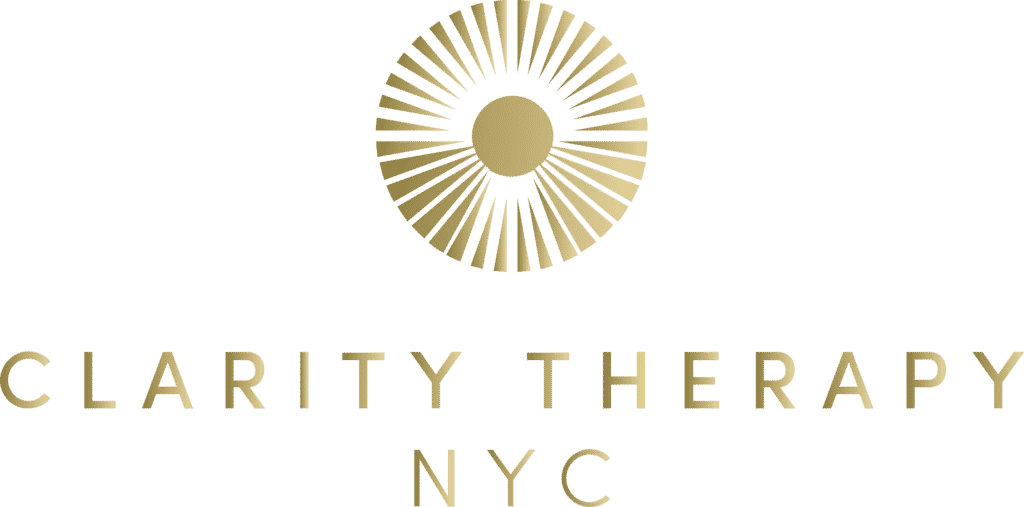As a licensed psychotherapist who is trained in Accelerated Resolution Therapy (ART) and prioritizes trauma-informed care for my clients, I’m dedicated to helping people create meaningful change in their life in a way that feels safe for them.
I specialize in working with clients who have experienced various forms of trauma, including abuse or bullying during childhood, narcissistic relationships, sexual violence, car accidents, systemic oppression, and more. The list of possible trauma-inducing experiences is almost endless. Oftentimes, people may not even be fully aware that they’ve experienced trauma.
For example, in situations such as childhood emotional neglect, where essential emotional connection with a caregiver was missing, or emotional abuse from a romantic partner disguised as jealousy, it can be difficult to pinpoint exact memories that one would label as a typical ‘trauma’. Still, the suffering is immense.
A therapist’s firsthand experience with ART
Because ART is an effective short-term approach, I’m glad to see the majority of my clients experience relief from troubling symptoms typically in one to five sixty-minute sessions. While I’ve witnessed the significant and positive impacts this approach has on clients firsthand, it’s also a newer form of therapy. Many clients who seek therapy to heal trauma have heard of Eye Movement Desensitization and Reprocessing (EMDR) which has gained attention in recent years. However, most clients aren’t aware that they can attain healing for the same presenting problems with ART.
Accelerated Resolution Therapy (ART) and Eye Movement Desensitization and Reprocessing (EMDR) are two different types of evidence-based therapy that are both effective in treating trauma-related conditions such as post-traumatic stress disorder (PTSD), anxiety, and depression. While both ART and EMDR utilize bilateral stimulation in their techniques, there are some key differences between these two therapies which we’ll explore together in this blog.
What is Accelerated Resolution Therapy (ART)?
ART is proven to be effective for the treatment of anxiety, trauma, phobias, and more.
Accelerated Resolution Therapy (ART) is a relatively new evidence-based therapy that combines principles from several traditional forms of psychotherapy to reduce the effect of trauma and other psychological disorders. ART was created in 2008 by psychologist Dr. Laney Rosenzweig, who was originally trained in EMDR.
It uses eye movements and visualization techniques to help the client replace negative images in the mind that cause the symptoms of Post-Traumatic Stress (or other distressing mental health problems) with positive images of the client’s choosing. This is often done quickly: it is expected that most traumatic memories or images can be processed in a single session. This means that the client starts to feel better right away, and can feel safe moving on to addressing the next troubling memory or presenting concern. ART is an evidence-based therapy that can create dramatic improvements in a variety of mental health concerns such as phobias, anxiety, trauma, depressive symptoms, and more.

ART also uses eye movements and visualization techniques to help the client replace negative images in the mind that cause distress.
Who can benefit from Accelerated Resolution Therapy (ART)?
Accelerated Resolution Therapy (ART) is a highly effective therapy for individuals who have experienced trauma or other mental health conditions, such as anxiety or depression, and are motivated to achieve profound healing. It’s particularly effective in treating Post-Traumatic Stress Disorder (PTSD) and is used by many mental health professionals to treat veterans, first responders, victims of sexual assault and childhood abuse, and other individuals who have experienced trauma.
With ART, clients often start to feel better right away, which means they feel safe moving on to address the next troubling memory or concern.
ART is also used to treat a variety of other mental health conditions, such as panic disorder, phobias, grief, and substance abuse disorders. It can be used as an adjunct treatment to other mental health interventions, such as cognitive-behavioral therapy (CBT) and medication management, or done on its own. ART allows for the client to have full choice over the nature of the services, in order to create a comprehensive treatment plan suited to the unique needs of each individual.
It is important to note that ART may not be appropriate for everyone. People with health issues related to their vision, or those with certain neurological disorders, may not be able to participate in ART’s eye movements. Anyone with eye or brain-related health conditions should be cleared by their relevant medical providers before participating in an ART session. ART may also not be effective for individuals who are unable to see and hold an image or thought in their “mind’s eye”, as this is a major component of the protocol. It’s necessary to consult with a qualified mental health professional to determine if ART is a suitable treatment option for you.
ART is also used to treat a variety of other mental health conditions, such as panic disorder, phobias, grief, and substance abuse disorders.

Can a therapist who doesn’t have specialized training in ART administer the treatment?
In order for ART to be effective, it must be administered by a mental health professional who has at least completed the Basic level training in the technique. The Basic training allows clinicians to start using ART immediately and successfully. Part of the training includes the clinicians stepping into the client role and receiving an ART session themselves, which creates a deeper understanding of the intervention and what is happening internally for the client. With enough hours of real world experience facilitating ART sessions, Basic-level trained clinicians can obtain formal certification from the Rosenzweig Center for Rapid Recovery, and move onto more advanced training levels.
Engaging in ART with an officially trained mental health professional is crucial for ensuring client safety, and maximizing likelihood of positive outcomes.
How is Accelerated Resolution Therapy (ART) different from EMDR?
One of the main differences between ART and EMDR is the length of treatment. ART is typically shorter in duration than Eye Movement Desensitization and Reprocessing (EMDR), with many clients experiencing relief from symptoms after as few as one to five sessions. EMDR, on the other hand, typically requires at least seven or eight sessions for clients to see significant improvement, with more sessions needed for complex trauma.
Given that ART can be scheduled one session at a time instead of a course of treatment lasting weeks or months, ART is more flexible to suit each individual’s schedule and financial situation. ART will still be effective for most issues even if the client does not want to or cannot commit to sessions every week. This also makes it a great cost-efficient option at a time when many people are concerned about their expenses.
Research shows that people with post-traumatic stress disorder (PTSD) who undergo ART often experience symptom improvement over one to five one-hour sessions, on average.
While both EMDR and ART attend to emotions and physical sensations that come up when processing memories and images, ART emphasizes reducing negative feelings as soon as possible. This helps the client with overall feelings of distress during each session, and even allows opportunities to enhance positive emotions and sensations when they start to occur.
Another difference is that ART places less emphasis on the content of the traumatic memories than EMDR. Instead, the focus is on identifying and reprocessing the negative emotions, sensations and images associated with the trauma. With ART, clients are guided to replace unpleasant imagery, whereas with EMDR clients are primarily desensitized to the images.
The client does not need to verbalize more of the details of their painful experiences than they feel comfortable sharing. In fact, with ART, the clinician may redirect the client to return to inner processing after brief periods of talking to ensure the session moves along smoothly and to completion.
For this reason, according to its creator and some providers who have been trained in EMDR report that ART is easier on both the client and the provider. Providers perceive specific benefits of ART over other therapies, such as the fact that ART is very direct and efficient, while putting the client in control of the session. And while ART is delivered in a systematic manner, no two sessions are the same.
Research shows that people with post-traumatic stress disorder (PTSD) who undergo ART often experience symptom improvement over one to five one-hour sessions, on average.
Many clients experience relief from troubling symptoms after as few as one to five ART sessions

If you’re looking for a treatment that can help you resolve trauma and reduce symptoms of anxiety, ART is a great option.
I’ve personally witnessed the positive impact of ART on clients, and the change from the start of a session to the end never ceases to amaze me. The improvement is evident in clients’ more positive facial expressions, relaxed body language, and optimistic way they speak.
Clients are often surprised at how much calmer they feel before even reaching the end of the ART session. The majority of clients who have experienced ART with me have shared that their stress levels are significantly reduced, if not eliminated, by the end of a session. It’s quite common for clients to share that it feels like a weight has been lifted off their shoulders, or that the memory is “over” and safely in the past after experiencing ART.
A particular client, who after ART was able to see connections between how his family treated him in the past and how he treats himself now, expressed to me that he wished he had learned about this treatment a long, long time ago.
The bottom line
Both ART and EMDR are effective when administered by trained professionals who know how to use them properly. No one intervention or technique will work for every single person, so it’s ideal to explore your options with a qualified professional. Individual differences between clients may lead to a preference for ART over EMDR, or vice versa.
It’s worth trying different forms of trauma therapy to see what works best for your individual needs. If you’re interested in learning more about how ART works, I encourage you to schedule a complimentary phone consultation with me today.




